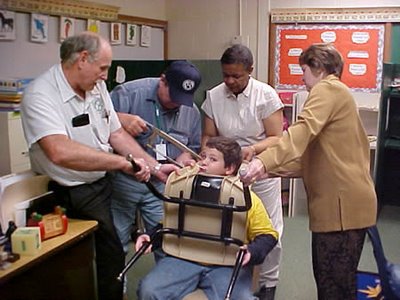Materials: One small piece of paper per participant, One blindfold
Goal: To have players make their way through all the fears in "The Fear Zone", discussing them as we encounter them.
Set-up:
- You will need an open space of approximately 10' x 15'
- Split your group into smaller groups of approximately 4-6 participants per group
- Have each participant sit separately to write a different fear on each of their three pieces of paper (the fears can be anything they fear in life, at school, etc.)
- Crumple each piece of paper into a ball and randomly spread them out in the 10' by 15' space
Description:
- Pick one group to start this challenge, from that group you will pick 1 player to be blindfolded and the other players to stand around the perimeter of the open space (aka "The Fear Zone")
- The blindfolded player must walk through The Fear Zone, attempting to avoid all of the fear balls of paper. His/her teammates will give verbal directions from their positions around the perimeter of The Fear Zone.
- If the blindfolded player steps on one of the fear balls, that player must stop, take off his/her blindfold, pick up the ball that he/she stepped on and read it out loud.
- The parent/teacher should now lead a discussion about that particular fear, survey the group to see if others share this fear, and be sure to compliment those for having the courage to share their fears.
- Pick another group to repeat the process.
- Continue with this for as long as you see fit.

Discussion Tips:
Here are some suggested points/questions for your discussion:
- Just talking openly about fears is courageous
- When did those first experience the fear they wrote down?
- What are different ways to begin to face your fear?
- Are we born with courage or can we learn it?
This activity has been adapted from the Dynamix Family Challenge seen in Character Is The Key by Sara Dimerman.

